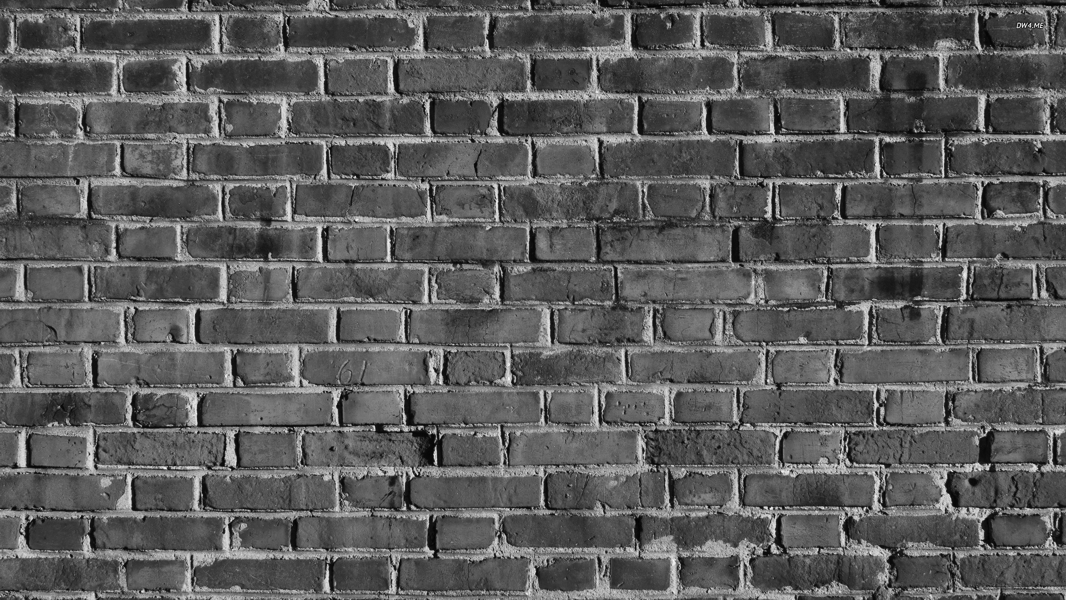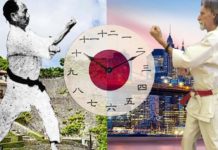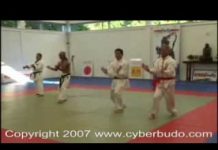Prior to WW II there were several publications which discussed vital points and how they could be used to knock out or kill a person. Several of these books give quite accurate information, if you know what to look for!
Professor Rick Clark ~ The knowledge and skill in the esoteric aspects of the martial arts have been kept secret from the general population so that those in the upper ranks could maintain their position of authority. Even early writers described how secretive martial arts instructors were about keeping knowledge of these points from the general public. Koyama & Minami (1913) state “the knowledge of jiu jitus (sic) has only recently been made general in Japan.”(p.6). The “upper classes, jealous lest their influence over the populace should wane, tried to keep it to themselves.” ibid p.6. History is replete with examples of those in power to attempting to maintain their position by the restriction of weapons or knowledge. For example, bronze when it was first used for weapons was vastly superior to other material and its production became a state monopoly. Today, a similar analogy is the knowledge of Nuclear weapons systems and how they are a closely guarded state secrets.
In feudal Japan only the warrior class (bushi) were allowed to carry two swords and practice the various forms of martial arts. Bujutsu was considered to be the exclusive domain of the warrior class. “Commoners, while not totally without weapons, nevertheless were forbidden to possess the types used by the bushi and were refused permission to study the bujutsu.”(Drager 1983 p.53). Kendo can be used as an example of how of Bujutsu techniques were changed in the early seventeenth century to a form of Budo. With this change “the essence of kendo was stated at that time to be more spiritual discipline for the improvement of personal character than an activity directly concerned with combat.”(Drager 1975, p.68). Originally it was designed for situations of life and death it now Kendo looked to the spiritual perfection of the individual. With this shift in emphasis to the non-combative aspect it was “the first time that swordsmanship in any form had been openly offered as available to all classes of people.” ibid p.68. Thus, the techniques of combat which had been restricted to the warrior class were now being openly taught to the general public.
The modern Budo forms of Aikido and Judo were being taught not as a form of combat, but, for spiritual and physical development in these early years. Aikido and Judo came from similar backgrounds, i.e. Jujitsu. Judo, the older of the two styles, was systematized in 1882 by Jigoro Kano. Later Aikido was organized by Morihei Uyeshiba in 1925 which was then known as aiki-jujutsu. It was given a name change in 1942 and has retained then name Aikido (Drager 1973 p.l39). Both men modified older systems of Jujitsu to create newer styles which “in the main [are] unrelated to real combat”(Drager 1973 p. 138). Kano was quite open in his acknowledgement that he removed the dangerous techniques from the syllabus of Judo. In fact, Judo relegated the practice of Kyusho (striking vital points of the body) to Kata (Koizumi 1967) so it was not necessary to strike these points on an opponent. The development of Kyusho-jitsu or Atemi-waza in the Japanese martial arts “lagged behind the more advanced systems of China and the Chinese-influenced fighting systems of Korea and Okinawa”(Draeger 1973 p.l34).
It was during the Taisho era (1912-26) that Gichin Funakoshi others introduced Okinawan Karate to the mainland of Japan. Yet, it would seem likely that Funakoshi did not widely teach Kyusho-jitsu to the general population. It is even possible he did not teach the advanced techniques to his senior students.
Funakoshi (1975) stated he “set about revising the kata so as to make them as simple as possible.”(p.36). The simplification of kata, however, can be first credited to one of Funakoshi’s teachers Anko Itosu. In the early 1900’s he developed the five Pinan kata which were then taught in the Okinawan school system. An alert military doctor noticed the physical condition of Okinawan conscript, which was attributed to the practice of Te. Karate was then included in the physical education curriculum in 1903. (Drager 1973 p.59). This was of course prior to the introduction of Karate into Japan in 1922.
Just as Kano developed Judo so that the dangerous techniques were removed allowing Judo to be taught in the school system of Japan. It appears that Funakoshi also taught Karate in such a way as to be appropriate for the school system. “Hoping to see karate included in the universal physical education taught in our public schools, I set about revising the kata so as to make them as simple as possible.” ibid. p.36. Funakoshi even states that Karate as taught in Japan is “not the same karate that was practiced even as recently as ten years ago, and it is along way indeed from the karate that I learned when I was a child in Okinawa.” ibid p.36). It must be assumed that Funakoshi did not teach a deep understanding of kata to these beginning students. It was not uncommon at that time to teach only a small number the real secrets of a system. To illustrate this point Jiu-Jutsu (sic) regarded the strikes to vital points of the body as secret techniques and did not impart this knowledge to novices. The master of a system would only teach the full system to the individual who would be the “inheritor of his entire method”. (Yamanaka 1918, p.208).
If you understand that kata was designed as a method for remembering various self-defense techniques it is easy to understand when Funakoshi (1975) states “if you merely move your hands and feet and jump up and down like a puppet, learning karate is not very different from learning to dance. You will never have reached the heart of the matter, you will have failed to grasp the quintessence of Karate-do.” (p.104). Funakoshi held fast to the principle that the true secrets of Karate were to be found in the various kata.
Funakoshi (1988) states “Looking over the thirty-odd kata, he [a student] should be able to see that they are essentially variations on just a handful. If you truly understand a single technique, you need only observe the forms and be told the essential points of the others.” (p.44) Grasping the essence of Karate-do is an elusive goal reached by few. It takes a mentor who truly understands Kata to point you in the proper direction. The “martial arts masters of old would confer a diploma and reveal key elements only to those disciples whose training, almost unbearably hard and austere, had lead them to experience directly the spirit of budo.” (Funakoshi 1988, p.44).
From the perspective of modem day martial arts two of the key elements to grasping the essence of Karate-do is the understanding that kata contain viable self-defense techniques which centre around strikes and manipulation of vital points. Basic to their interpretation of kata is the lack of, what would normally be interpreted as, blocks. These aspects of karate-do were probably withheld from high school and college students because of how lethal the techniques are.
Consider for a moment, if you could teach individuals to lightly strike various parts of the body and knock out your opponent would you want every high school student in your city to have that knowledge? Of course not! This type of technique would be withheld from all but a very few of the best students of an instructor.
Or if you were an instructor with this knowledge of deadly techniques would you teach the real secrets to those who had recently conquered your nation? I think not. Okinawa was a conquered nation under Japanese rule. How likely is it that Funakoshi ever revealed the true secrets of Karate-do to his senior students? In the words of one of Funakoshi’s early students Shigero Egami (1976), speaking of the “Yoi” or ready posture, he states “I know that there are changes in function among the various kata, but I must confess that I do not know the reason, nor why they change according to the kata.” (p. 107). If such a senior student of Funakoshi does not fully understand kata how likely is it that American servicemen after WW.II would be taught the real meaning of Karate.
This doubt of instructors teaching the advanced or deadly techniques to westerners is clearly stated by Koyama & Minami (1913) when they state “There are some jiu jitsu maneuvers that have never been explained to Europeans or Americans – and probably they never will be.” “These death blows are remarkable. Some are delivered on the spine, others on the neck and head, and two on the face. There are almost numberless maneuvers that temporarily paralyze nerves and nerve centers, and others that stop the circulation of the blood in various parts of the body.” (p.5-6).
This conviction is held by Vairamuttu (1954 p.21), who echoed Koyama & Minami when he stated: “Whether the real secrets of advanced jujitsu, which are so greatly treasured by the Japanese and imparted under vow of strict secrecy to pupils of unquestionable moral character, have ever been divulged to Occidentals, is very much open to doubt.” The ‘real secrets’ to which Vairamuttu referred were the methods of attacking the vital points of the body and the resuscitation after the administration of such blows.
This veil of secrecy is found throughout the various martial arts. To illustrate this point, Aikido masters have been taught groups of techniques known as Kaeshi-Waza. Kaeshi-Waza are techniques which involve a blending from one movement to another which will allow the initiated to emerge victorious over their opponent. Saito (1974) offers an illuminating discussion of Kaeshi-Waza which are handed down to high rank black belts in Aikido. “In olden days, Founder Morihei Uyeshiba used to initiate his leading disciples into the art of Kaeshi-waza instruct secrecy as a ‘manual for martial competition’ prior to sending them out in the world as undefeatable instructors. The instructors, armed with Kaeshi-waza, were thus able to gain leadership always in their training sessions even when they were in a defensive position.” (p.125).
It is clear from this that Ueshiba withheld secret techniques from the lower rank Japanese students to maintain the superiority of his upper rank students. Ueshiba then, it appears, went one step further and purposely withheld techniques from any student who were not Japanese. This statement is supported by Stevens (1987) when he quotes a passage from Morihei Ueshiba’s privately circulated text Budo published in 1938 that gives the warning ‘This manual is not to be shown to non-Japanese.’ (p.78).
What was it that Ueshiba would teach his instructors? Saito (1974,p.125-165) demonstrates techniques which are counterattacks to Aikido throws and joint locks. One assumes that would be the basis of the Kaeshi-waza of Ueshiba. However, there appears to be more to Ueshiba’s art than counter techniques shown by Saito. Stevens (1987) describes an event that occurred during Ueshiba’s sojourn in Mongolia. “Morihei, too, became an instant lama, giving lavish performances of chiokon-kishin techniques and applying the laying on of hands to cure illness. When he demonstrated his prowess as the King of Protectors by causing powerfully built Mongol warrior to collapse by merely touching them — the ignorant fighters were unaware that he attacked their vital pressure points.”(p.29). The use of vital points appears to play a vital role in the martial art Ueshiba. Not surprisingly, this does not appear to be taught to westerners. Ueshiba’s ability to ‘merely touch’ a person and cause them to collapse must indeed have been a wonderful art. Such attacks to vital points would seem to be something very worthwhile to pass on to your students. Yet, in an examination of Aikido texts by Saito (1974), Tohei (1968), Uyeshiba (1962), Westbrook (1970), Yamada (1974) and Shioda (1962) did not reveal any specific references to vital points or such applications as attributed to Ueshiba. Invariably these texts would suggest an Atemi-waza (strike to vital points) prior to performing a technique. Most texts would offer general locations to strike for particular throws or pinning techniques. Illustrations of such general instructions can be found in the text by Saito (1974 p. 124) who offers the following information on Atemi-Waza When performing Shio-nage: “Atemi to our partner’s face with your right hand”, “Kicking his right knee sideways to dislocate the joint.”, “Atemi to his side with your left elbow.” These Atemi-waza are presented in such a way it seems they are used only to distract the individual. Not as an integral part of the technique.
It is interesting to note all of the texts will give quite detailed explanations of the throw, yet, are extremely vague on the Atemi-waza What is even more interesting is a text in Japanese language by Hashimoto (1964) where there is a comparison 27 Kyusho (vital) points used in Aikido to the points used in Acupuncture. This list is quite detailed and gives the nomenclature used both in Aikido and Acupuncture. Hashimoto lists vital points used in Aikido which are found on the Chest, Head, Face, Hand, Leg and Back. While the exact locations of vital points have not been described in English language Aikido texts, it is quite clear they are openly discussed in Japanese texts.
Prior to WW II there were several publications which discussed vital points and how they could be used to knock out or kill a person. Several of these books give quite accurate information, if you know what to look for! To give several examples Mitchell (1936) demonstrates at least three workable knockouts (p.l35-143). Hunter (1938) lists and describes vital points on the human body and describes a knockout. (l 8-24). He additionally describes various Katus or ways of bring back a person to consciousness (Vol 2, p. 7-9).
In general these texts are quite vague concerning exactly how to go about knocking out an opponent. If the reader were already familiar with vital point theory and techniques these knock outs would be self-evident. There were not any texts reviewed which tied in Kata and vital point practice except Koizumi (1960). Each knock out was described as an individual technique and not connected to kata.
We, the martial arts community, have allowed this knowledge to virtually slip away. To give a specific example Handcock and Higashi (1905) published a book which pointed out a number of Kyusho (vital) points and detailed methods of Katsu (resuscitation). This book was republished in 1961 by Dover Publications. At the beginning of the book the following notation was printed: “This Dover edition, first published in 1961, is an unaltered republication of the work originally published by G.P. Putnam’s Son’s in 19O5, except that the last two sections (26 pages) on serious and fatal blows and Kuatus, or the restoration of life, have been omitted, because their use to the public is doubtful and they do not affect the over-all value of the book. “While the publisher may have felt the overall value of the book would not be effected, the deletion of these two sections is a significant shortcoming.
There are majors flaw in these early works, as well as contemporary works dealing with vital points:
- They lack the direction and angle to strike, and the results from the strike.
- They lack the way in which these points are set up to allow you knock out the person
- Most importantly is how these techniques are to be found in various traditional Kata. These important aspects of the martial arts has been neglected for much too long of a time. It is critical at this juncture we rediscover the true meaning of Karate-do.’
Bibliography:
Drager, D. F. The Martial Arts and Ways of Japan: Volume 1 Classical Bujutsu
Weatherhill:New York (1983).
Drager, D. F. The Martial Arts and Ways of Japan: Volume 2 Classical Bujutsu
Weatherhill:New York (1975).
Egami, S. The Way of Karate: Beyond technique Kodansha International,
Tokyo (1976).
Funakoshi, G. Karate-Do: My way of life Kodansha International, Tokyo, 1975.
Hancock, H. Irving & Higashi, Katsukuma THE COMPLETED KANO JIU-JITSU (JITSO)
Dover Publications, Inc., New York, 1961.
Hashimoto, Masae ATSUKUNAI OKYU NYUMON (An Introduction to Acupuncture
and Moxibusiton without Cautery. Tokyo, 1964.
Hunter, H.H. Super Ju-Jitsu: Vol. 1 Times Job Print: Ontario, 1938.
Hunter, H.H. Super Ju-Jitsu: Vol. 2 Times Job Print: Ontario, 1938.
Koizumi, G., My study of Judo: The Principles and the Technical
Fundamentals Cornerstone Library: New York, 1967.
Koyama, K., & Minami A. Jiu Jitsu: The Effective Japanese Mode of
Self-Defense. American Sports Publishing: New York, 1913
Mitchell, D. Skilled Defense. Dewey Mitchell System of Skilled Defense:
Cleveland, 1936.
Saito, M. Aikido: Sword Stick and Body Arts Vol. 4 Vital Techniques
Minato Research: Tokyo,1974.
Saito, M. Aikido: Sword Stick and Body Arts Vol. 1, 2, 3 & 4 Vital
Techniques Minato Research:Tokyo, 1974.
Stevens, J. Abundant Peace: The Biography of Morihei Ueshiba founder
of Aikido Shambhala:Boston,1987.
Tohei, K. This is Aikido Japan Publications: Tokyo, 1968.
Shioda, G. Dynamic Aikido Kodansha: Tokyo, 1968.
Vairamuttu, R.A. Scientific Unarmed Combat: The art of dynamic self-
defense the ancient Asian pyscho-physical study W. Foulsham: London, 1954.
Uyeshiba, K. Aikido Kodansha: Tokyo, 1962.
Westbrook, A., & Ratti, O. Aikido and the Dynamic Sphere: An Illustrated
Introduction Charles E. Tuttle: Vermont, 1970.
Yamada, Y. Aikido Complete Citadel Press: Sercaucus, 1974.
Yamanaka, K. Jiu-Jutsu Penton Press: Cleveland, 1918.
Professor Rick Clark of Ao Denkou Kai












Comments are closed.